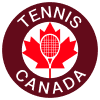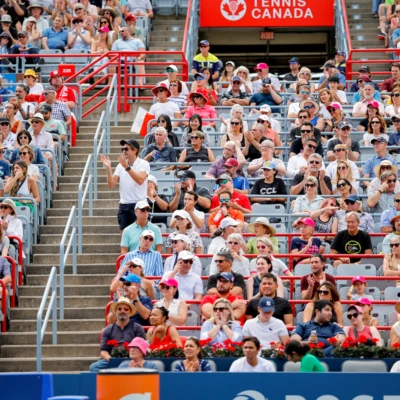NATIONAL BANK OPEN 101
How Does a Tennis Tournament Work?
Winning a tournament as prestigious as the National Bank Open presented by Rogers is a remarkable achievement for the best players in the world. If you're new to tennis or attending the tournament for the first time and need to brush up on your knowledge of the sport, here's what you need to know about the path to being crowned champion in Montreal and Toronto.
THE MAIN DRAW BREAKDOWN
A total of 96 players are entered in both the singles main draws of the ATP Masters 1000 tournament in Montreal and the WTA 1000 draw in Toronto. 76 players earn direct entry based on the ATP and WTA rankings published four weeks prior to the event. Meanwhile, twelve players earn their place in the main draw by winning two rounds of qualifying and eight players are awarded main draw wild cards as selected by Tennis Canada.
A total of 32 teams are entered in each of the doubles draws in both cities with 30 teams earning direct entry based on their rankings and two more pairs each getting a wild card from Tennis Canada to compete. Unlike singles, there are no qualifying matches to determine a portion of the entries.
The potential matchups for the week in both singles and doubles are decided during the official draw ceremony held just prior to the start of the tournament.
THE MATCHES
There are 32 seeded players in both the singles draws according to the WTA and ATP rankings published the Monday prior to the start of the tournament. The top 32 seeds receive an opening round bye which means they automatically advance to the second round. There are seven rounds in singles played over twelve days before a winner is declared and five rounds in doubles.
The NBO is a single-elimination tournament meaning that the loser of each match in both draws is eliminated from title contention.
SCORING
The National Bank Open in Montreal and Toronto uses tennis' standard scoring system to determine the winner of each contest. The singles matches are best-of-three sets. Meanwhile, doubles matches are also best-of-3 with a 10-point tiebreak in lieu of a full third set.
WTA 101
HISTORY
Who founded the WTA?
The Women's Tennis Association (WTA) was founded by Billie Jean King in 1973 on the principle of equal opportunity. Today, the WTA is the global leader in women’s professional sports.
What does the WTA tournament calendar look like?
The WTA Tour comprises over 50 events, spanning six continents and nearly 30 countries and regions with a global audience of over 700 million.
Who are the 'Original 9'?
In September 1970, the birth of women's professional tennis was launched when nine players signed $1 contracts with World Tennis publisher Gladys Heldman to compete in a new women's tour, the Virginia Slims Series. The Original 9, as they were called, included Billie Jean King, Rosie Casals, Nancy Richey, Kerry Melville, Peaches Bartkowicz, Kristy Pigeon, Judy Dalton, Valerie Ziegenfuss, and Julie Heldman.
RANKINGS
How do the WTA rankings work?
Rankings for singles and doubles are based on points accumulated for wins earned at tournaments on the WTA Tour and the ITF World Tennis Tour. The most prestigious events (Grand Slams and WTA 1000s) award the most points. Players keep their ranking points for one full calendar year from when they earned them. The following season, they must defend those points if they don't want to lose them. The rankings are updated every Monday.
When was the current computer-based ranking system first used?
The computerized ranking era began with Chris Evert installed as the WTA's first official world No. 1 on November 3, 1975.
How many players have been ranked No. 1 in the history of the WTA?
A total of 29 players have been World No. 1. Steffi Graf held the top spot on the rankings for 377 weeks, the most of any player on the WTA Tour.
TOURNAMENTS
What are the different WTA tournament categories?
WTA Tournaments are divided into four different categories: WTA 125, WTA 250, WTA 500, and WTA 1000, which is where the National Bank Open presented by Rogers falls, alternating between Montreal (odd years) and Toronto (even years). Each number represents the number of ranking points the singles winner earns. The more prestigious the tournament, the bigger the draws. The year-end WTA Finals is the Tour's showcase event and features the top 8 singles players and doubles teams in the world. Meanwhile, The four Grand Slams, (Australian Open, Roland-Garros, Wimbledon, and the U.S. Open), which are professional tennis' crown jewels, are governed by the International Tennis Federation (ITF). They award 2,000 ranking points to the singles champions.
What are the other tournaments that the International Tennis Federation (ITF) governs?
The ITF Women's World Tennis Tour is the minor league for professional tennis. Players use it to build up their ranking to eventually graduate to the WTA Tour. It offers approximately 500 tournaments across 65 countries and incorporates six prize money levels of tournaments: $15,000, $25,000, $40,000, $60,000, $80,000 and $100,000. The Tour stops on Canadian soil in Toronto, Fredericton, Saskatoon, Granby, Saguenay, Edmonton, and Calgary.
What is the Billie Jean King Cup?
The Billie Jean King Cup – formerly known as Federation Cup (1963-1995) and Fed Cup (1995-2020) – was launched in 1963 to celebrate the 50th anniversary of the ITF. It is now the world’s largest annual international team competition in women’s sports, with a record 134 nations competing in 2023.
Who are some of the past champions of the National Bank Open?
The best of women’s tennis has graced us with their presence year after year in Montreal and Toronto with the likes of Serena Williams, Martina Navratilova, Chris Evert, Steffi Graff, Monica Seles, and Martina Hingis coming away with the winner’s trophy.
ATP 101
HISTORY
Who founded the ATP?
Tennis has come a long way since the "Open Era" began in 1968 and the ATP has been part of the storied history.
The Grand Slam tournaments and all other national championships were open to amateur competitors only prior to 1968. Two years later, tournaments around the world formed a unified circuit, which became the Grand Prix. In 1972, during the first week of the US Open at Forest Hills, the leading professionals joined forces to create the Association of Tennis Professionals.
What is the 'press conference in the parking lot'?
It was a formative and groundbreaking moment for the ATP that happened on August 30, 1988. In a parking lot outside the gates of the US Open, with a rented PA system and a podium bedecked with the ATP logo, players, media, and interested parties gathered to hear ATP CEO Hamilton Jordan deliver 'Tennis at the Crossroads'. This critique of the opportunities and challenges facing men's professional tennis was the birth of the ATP Tour and had an immediate impact on the men's game.
What does the ATP tournament calendar look like?
From the United Cup in Australia, to Europe, the Americas and Asia, the stars of the game battle for titles and ATP Rankings points at ATP Masters 1000, 500 and 250 events, and Grand Slams. The ATP Challenger Tour also awards ranking points. All roads lead towards the Nitto ATP Finals, the prestigious season finale held in Turin, Italy. Featuring only the world’s top 8 qualified singles players and doubles teams, the tournament also sees the official crowning of the year-end ATP World No. 1, the ultimate achievement in tennis.
RANKINGS
How do the ATP rankings work?
Rankings for singles and doubles are based on points accumulated for wins earned at tournaments on the ATP Tour. ATP Challenger Tour, and the ITF World Tennis Tour. The most prestigious events (Grand Slams and ATP Masters 1000s) award the most points. Players keep their ranking points for one full calendar year from when they earned them. The following season, they must defend those points if they don't want to lose them. The rankings are updated every Monday.
When was the current computer-based ranking system first used?
The ATP Rankings began on August 23, 1973 with Ilie Nastase debuting at No. 1, and has continued through today as the official ranking system in men's professional tennis.
How many players have been ranked No. 1 in the history of the ATP?
A total of 28 players have been World No. 1. Novak Djokovic held the top spot on the rankings for 396 weeks which is a record. Meanwhile, Roger Federer found himself at the helm for 237 consecutive weeks.
TOURNAMENTS
What are the different ATP tournament categories?
ATP Tournaments are divided into three different categories: ATP 250, ATP 500, and ATP Masters 1000, which is where the National Bank Open presented by Rogers falls, alternating between Montreal (even years) and Toronto (odd years). Each number represents the number of ranking points the singles winner earns. The more prestigious the tournament, the bigger the draws. ATP Challenger Tour events are the second-highest tier of tennis competition. The year-end ATP Finals is the Tour's showcase event and features the top 8 singles players and doubles teams in the world. Meanwhile, The four Grand Slams, (Australian Open, Roland-Garros, Wimbledon, and the U.S. Open), which are professional tennis' crown jewels, are governed by the International Tennis Federation (ITF). They award 2,000 ranking points to the singles champions.
What are the other tournaments that the International Tennis Federation (ITF) governs?
The ITF Men's World Tennis Tour provides entry-level professional tennis tournaments and provides a pathway between the ITF Junior World Tennis Tour and the elite levels of men’s professional tennis. The results of ITF tournaments are incorporated into the ATP Ranking, which enables professionals to progress to the ATP Challenger Tour and ATP Tour, and ultimately the Grand Slams.
The Tour offers approximately 550 tournaments across 70 countries and incorporates two prize money levels of tournaments: $15,000 and $25,000. In 2023, the Tour stopped on Canadian soil in Montreal, Laval, Saint-Augustin, and Edmonton.
What is the ATP Challenger Tour?
The ATP Challenger Tour, known until the end of 2008 as the ATP Challenger Series, is a series of international men's professional tennis tournaments.
In 2022, the ATP Tour announced an overhaul of the tournament system for the 2023 season and beyond. Challenger 110 and Challenger 90 events were scrapped, Challenger 80 was reduced to Challenger 75 while the prize money requirements for it and Challenger 100 were increased. It also introduced the new highest category − Challenger 175 with the inaugural tournaments held during the second week of the Indian Wells, Rome and Madrid ATP Masters 1000 events.
What is Davis Cup?
Davis Cup began in 1900 as a competition between USA and Great Britain. It's now the world's largest annual international team competition in sports, with 155 nations entering in 2023.
Who are some of the past champions of the National Bank Open?
Through the years, the who’s who of men’s tennis have lifted the prestigious NBO trophy including Novak Djokovic, Rafael Nadal, Roger Federer, Bjorn Borg, Ivan Lendl, John McEnroe, and Andre Agassi to name just a few.







